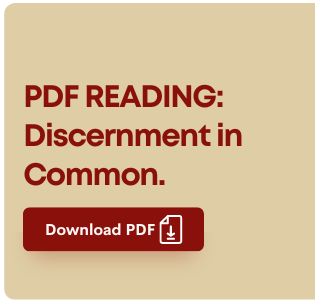Pope Francis refers to a new ecclesial model in a synodal key with the following words: “What the Lord asks of us, in a certain sense, is already all contained in the word “Synod”. To walk together – laity, pastors, Bishop of Rome” (Francis, Speech at the Commemoration of the 50th Anniversary of the institution of the Synod of Bishops, 2015). And the fact is that walking together presupposes a re-learning or change of mentalities, relationships and communicative dynamics in our ecclesial structures. It is in this horizon that the Preparatory Document of the Synod on Synodality places us, when it states that: “the fundamental question that guides this consultation of the People of God, as recalled in the introduction, is the following: In a synodal Church, which proclaims the Gospel, all ‘walk together’: how is this ‘walking together’ realized today in one’s own particular Church? What steps does the Spirit invite us to take in order to grow in our ‘walking together’?” (DP 26). But what is meant by this much-used expression “walking together”? The same Preparatory Document gives us the definition and its implications:


Discernment in common (Laurence Loubières xmcj, Canada).
This presentation consists of four parts.
- It looks at why discernment is important in the Christian Life.
- It looks at the different elements that come into play in a discernment process, whether personal or communal.
- It deals with discernment in community itself.
- Offers some concrete applications of communal discernment.
“If you are having problems watching YouTube due to regulations issued in your Country . We will soon have a solution for video streaming”
Upon reading this you are asked to reflect on it and the video that preceded it. Some questions to guide your reflection are as follows:
- What has struck me about what I have heard/read?
- What is resonating with me?
- What am I having difficulty with?
- If I had to name one important point that I am taking away, what would that be?
This is a personal reflection and should not be submitted to Formation Continua.


Consensus building – (Emili Turù, Spain).

Conflict and divergence management – (Judith Gruber, Germany).

Processes of listening, discerning and decision making in a Diocese – (Msgr. Faustino Armendáriz Jiménez, México).

— Christina Kheng, Singapore.
Models of discernment in Asia.
— Agbonkhianmeghe Orobator sj, Nigeria.
Models of communal discernment in Africa.
— Anne Arabome, sss, Nigeria
Practices of communal discernment in Africa
— Christine Danel, xmcj, France
Networking and processes of listening and discerning together.


